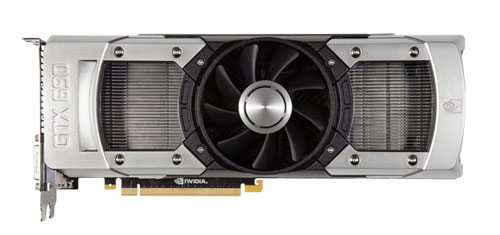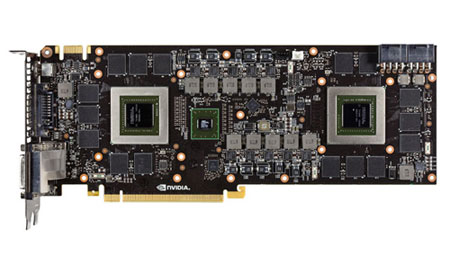Our Aim
To provide you with an overview on New And existing technologies, hopefully helping you understand the changes in the technology. Together with the overviews we hope to bring topical issues to light from a series of independent reviewers saving you the time And hassle of fact finding over the web.
We will over time provide you with quality content which you can browse and subscribe to at your leisure.
TekSpek 's
NVIDIA GeForce GTX 690
Date issued:
NVIDIA launched the GeForce GTX 680 graphics card on March 22, 2012. Based on a new architecture called Kepler, GTX 680, priced at around £400, became the fastest graphics card in its class. Feature-rich and able to play practically all games at the very highest image-quality settings, it was only beaten by more expensive graphics cards such as the GeForce GTX 590 and Radeon HD 6990. These two cards used the power of two GPUs on one board to eke out a small advantage over the single-GPU GTX 680.
Now, NVIDIA is putting two GTX 680 cores on to one board and releasing the resulting mega-powerful card as the ultra-high-end GeForce GTX 690 4GB. Priced at around £825, or roughly the same as two GTX 680s, the new card performs very closely to the numbers laid down by two GTX 680s tied together in one system by using NVIDIA's SLI technology. How? The following table shows you.
| GPU | GeForce GTX 690 (4,096MB) | GeForce GTX 680 (2,048MB) | GeForce GTX 590 (3,072MB) | GeForce GTX 580 (1,536MB) |
|---|---|---|---|---|
| DX API | 11.1 | 11.1 | 11 | 11 |
| Process | 28nm | 28nm | 40nm | 40nm |
| Transistors | 3.54bn x 2 | 3.54bn | 3.0bn x 2 | 3.0bn |
| Die Size | 294mm² x 2 | 294mm² | 520mm² x 2 | 520mm² |
| Processors | 1,536 x 2 | 1,536 | 512 x 2 | 512 |
| Texture Units | 128 x 2 | 128 | 64 x 2 | 64 |
| ROP Units | 32 x 2 | 32 | 48 x 2 | 48 |
| GPU Clock (MHz) | 915 (1,019) | 1,006 (1,058) | 607 | 772 |
| Shader Clock (MHz) | 915 (1,019) | 1,006 (1,058) | 1,215 | 1,544 |
| GFLOPS | 5,621 | 3,090 | 2,488 | 1,581 |
| Memory Clock (MHz) | 6,008 | 6,008 | 3,414 | 4,008 |
| Memory Bus (bits) | 256 x 2 | 256 | 384 x 2 | 384 |
| Max bandwidth (GB/s) | 384.6 | 192.3 | 327.7 | 192.4 |
| Power Connectors | 8+8 | 6+6 | 8+8 | 8+6 |
| TDP (watts) | 300 | 195 | 365 | 244 |
| GFLOPS per watt | 18.74 | 15.84 | 6.82 | 6.32 |
The table depicts the best single- and dual-GPU graphics cards from the present and last generation of GeForces. GTX 590 takes in two GTX 580 GPUs but scales the frequency back. This is done to ensure the card doesn't become too hot or noisy, for its 365W TDP is about as high as board engineers can go without resorting to cooling that's just too loud.
Likewise, the GeForce GTX 690 takes in two GTX 680 GPUs but doesn't reduce the frequencies as savagely as on GTX 590. The lower-power nature of the underlying Kepler GPUs means that NVIDIA can construct a dual-GPU card that's very close in specification to two GTX 680s and do so with a lower TDP of just 300W, or 65W less than last-generation GTX 590. Making it clear, GTX 690 is both faster and more power-efficient than GTX 590
And while the GPU frequency is lower than the GTX 680's 1,006MHz - GTX 690 chimes in at 915MHz - the auto-overclocking nature of NVIDIA's GPU Boost function means the GTX 690's two cores operate at close to GTX 680 speeds most of the time. The fundamental understanding to take away from this is that the GTX 690, whose two GPUs are housed on one board, is very nearly the same speed as two GTX 680s operating in two-card SLI. NVIDIA has effectively taken the graphics horsepower of two GeForce GTX 680s and placed it in one card... the GeForce GTX 690.

Here is the reference GeForce GTX 690 4GB card. It is 11in long and weighs 1,054g. Dimensions-wise, it will fit into most mid-range computer cases, and one of the benefits of having one card instead of two is that it can plug into any modern motherboard, irrespective of whether it has a second graphics slot or if it supports NVIDIA's SLI technology, which are the prerequisites needed to run two GeForce cards together in multi-GPU SLI. The hard work is done by NVIDIA, as the card itself features the necessary SLI compatibility right on the PCB. Should you so want, a second GTX 690 can be connected-up to offer four-GPU gaming, which is as good as it gets.

Back on to the card itself, NVIDIA has spent considerable time and investment into ensuring the GTX 690 is a well-balanced card. Independent review websites have shown that it has performance in spades - it is over 50 per cent faster than the previous fastest card, the GeForce GTX 590 - but it is also relatively quiet and cool. Keeping such a high-performing card cool and quiet is perhaps even more impressive than its graphics speed.
Just like the GeForce GTX 680, this monster graphics card can drive four monitors from its video outputs on the back. Up to three are generally set aside for multi-screen gaming, where, for example, three 24in, 1,920x1,080-resolution monitors are placed side by side and parts of the game are rendered on each. The wider viewing angle gives a more immersive gaming experience. NVIDIA calls this Vision Surround, and GTX 690 has enough power to run the latest games on three full-HD monitors with comparative ease. Indeed, it can also run three suitable screens with 3D trickery in tow.
There was little doubt that NVIDIA had launched the best GPU when the GeForce GTX 680 2GB card surfaced on March 22, 2012, though a few experts remained unconvinced that it was the world's fastest card, primarily due to the existence of dual-GPU offerings such as GeForce GTX 590 and AMD's Radeon HD 6990. Now, however, such ambivalence has come to an end. The GeForce GTX 690 is, quite easily, the fastest consumer graphics card in the world, so if you want the absolute best gaming potential for a new PC, this is it.
Add-in card partners such as ASUS, MSI, Gigabyte, EVGA, Gainward, Palit and Zotac will release GeForce GTX 690 in limited quantities on May 3, to be followed by greater stock levels commencing May 7. As always, SCAN is going to retail the widest range of GeForce GTX 690 cards which are available to buy here